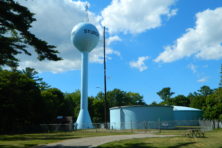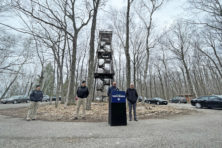New Tower with Helical Ramp Recommended for Potawatomi Tower
- Share
- Tweet
- Pin
- Share
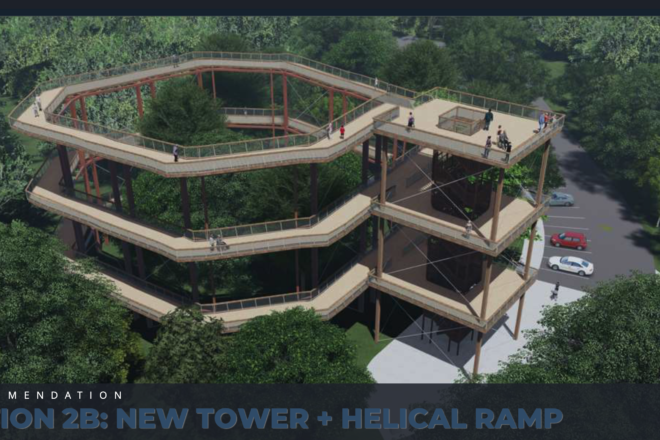
Those fighting for the tower’s repair are not happy with the design options
The long-awaited conceptual designs for the Potawatomi State Park observation tower were made public on Thursday evening during a brief presentation from Grāef, an engineering, design, planning and consulting firm.
The recommended option turned out to be a new tower with a 1,300-foot helical ramp at a cost of $5,943,326.
The Department of Natural Resources (DNR) is now taking feedback from the public on the options via an online survey through Feb. 13. Access it at dnr.wisconsin.gov/topic/parks/potawatomi/tower.
Consultant Explains Recommendation
Gov. Tony Evers hired Grāef in April 2022 to supply pre-design through construction services. Evers initially announced that one design option would be for restoring the existing tower, the second design for a new structure that maintains the tower’s historical character.
The repair and the new construction were both presented, and both options came with one of two ramps: a helical ramp or a linear ramp like the 950-foot-long ramp at Eagle Tower in Peninsula State Park. The eight-foot-wide ramp designed for the Potawatomi Tower would be 1,300 feet long, whether linear or helical.
Grāef consultant Fred Groth recommended the helical version because less land would be disturbed and fewer trees removed with its more compact shape. Grāef also looked into an elevator and a Hill Climber (an enclosed ski-lift cab) but eliminated both options because full-time operators were recommended.
Groth said they considered required criteria when preparing their options: the repair or new tower must reflect the current tower’s historical character because it’s listed on the National and Wisconsin State Registers of Historic Places; the tower must be fully accessible to all park visitors of all abilities; its height must be 75 feet; it must be constructed of wood or a product that resembles wood; the site access for pedestrians and vehicles cannot be compromised; and the consultant must consider the three condition-assessment reports that have been done on the tower since it was closed in 2017 due to structural issues.
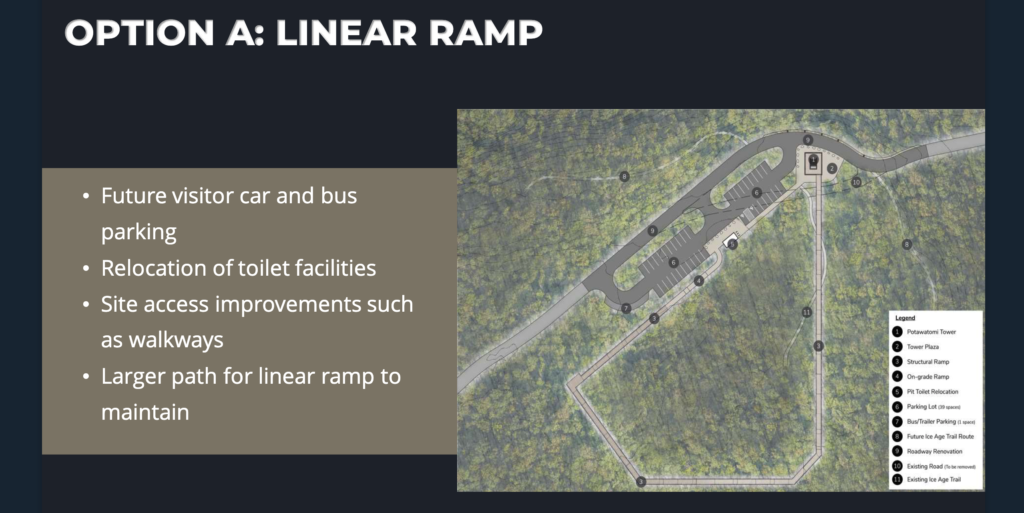
The first of those reports was done by the Forest Products Laboratory, which is part of the U.S. Department of Agriculture’s Forest Service; the second by Dan Tingley of Wood Research and Development, a wood expert hired by the Sturgeon Bay Historical Society Foundation (SBHSF); and the third by Brander Engineering, which was commissioned by the state’s Department of Administration.
What Grāef walked away with after examining all the reports was that Tingley was correct: The tower could be repaired.
“But there’s going to be considerable repairs needed,” Groth said. Columns, some perimeter beams and joists are all in “bad shape,” he said, and some decking needs to be replaced. The handrails would also need updating to a safer height of 42 inches, with handrails installed on the interior. He said all three levels of the tower would need to be shored up so the existing columns could be removed and new wood pinned in.
Main Cost Difference Comes from Projected Maintenance
There’s not a lot of cost difference between repairing the existing tower and adding a helical ramp, versus building a new tower and adding a helical ramp: $6,058,800 versus $5,943,326, respectively.
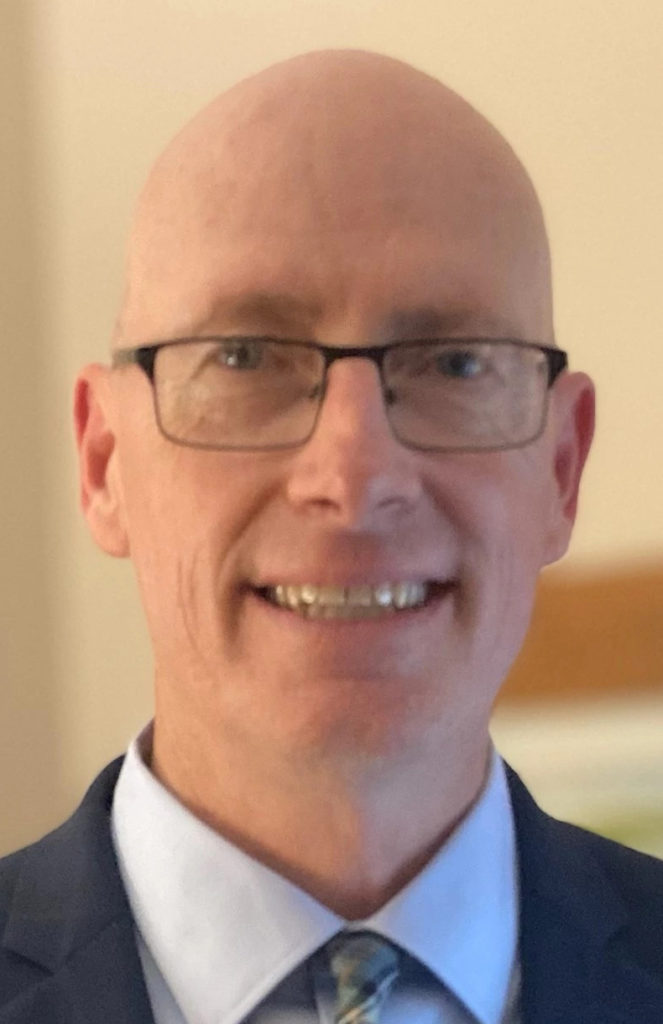
However, Grāef recommended building a new tower with a helical ramp because of the difference in the projected maintenance costs over 40 years: $1,060,010 versus $448,010. That puts the total cost of ownership at $7,118,810 versus $6,391,336, respectively – a difference of $727,474 over 40 years.
At the end of Groth’s presentation, DNR parks director Steve Schmelzer said the DNR will wait until the survey closes Feb. 13 before selecting a final design and putting it into the state-budget process.
“A 2023-25 budget request will cover any of the options,” Schmelzer said.
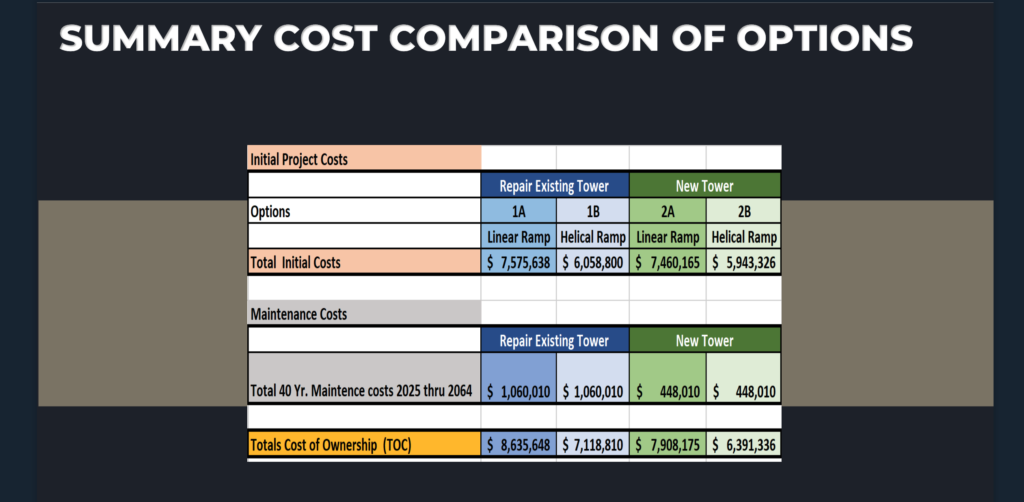
Designs Not Well Received
Longtime advocates for the tower’s repair are not happy with the design options presented.
“We can save $6 million if we repair the historic tower and add an ADA kiosk or lookout, which could serve 100% of the mobility-impaired community,” said Christie Weber, past president of the SBHSF. “Adding a monster ramp 20 miles from another one that can serve only 30% of the mobility impaired to look at the same bay of Green Bay is irresponsible to both our history and to the taxpayers.”
Dave Allen, a Nasewaupee resident who has led a local group advocating the tower’s repair, sent Gov. Evers a letter following the Thursday-evening presentation. He asked the governor to restore the tower consistent with its historical status and explore creative options for including people with all types of disabilities – mobility, cognition, hearing and vision.
“Providing access to all visitors of all abilities at the historic Potawatomi Tower can be accomplished in other ways,” Allen said, such as with Wi-Fi cameras with sound, interpretive websites, and visitor stops at alternative locations, such as the pullout that already exists a short distance from the tower and provides the same view.
Local Lawmakers Denounce Design Options
Those who attended the Zoom-only public-information meeting were hidden from each other. Upon request, the DNR told the Peninsula Pulse that 104 people attended the virtual presentation, which consisted of a short introduction by the DNR, then a PowerPoint presentation of the options by Groth. The whole session lasted fewer than 30 minutes, with no opportunity for public input.
State Sen. André Jacque (R-De Pere) and Rep. Joel Kitchens (R-Sturgeon Bay) have been advocates for the tower’s repair, and neither had good things to say about the presentation or designs.
“Why conceal the results of their study from legislators and the public for weeks, only to tell them to log on at 6 pm for a ‘live’ video that could have been recorded and posted at any time?” Jacque asked in a statement following the presentation. “The only thing more virtual than last night’s meeting is Gov. Evers’ commitment to preserving the historical heritage of the Potawatomi Tower.”
Kitchens, too, said the recommended options were tone deaf, given all the input the DNR has already received.
“My office has received hundreds of contacts regarding the tower since it was shut down,” Kitchens said. “Not a single person was asking for a new tower. Everyone wants to repair the existing tower. All of our local governmental units passed resolutions asking for repair of the existing tower, not replacement. The administration has absolutely refused to listen to the people of Door County.”
Jacque said Evers’ budget contains $200 million for maintenance projects for state facilities – money that could be used to repair the tower.
“There’s still time to do the right thing without intentionally concocting plans to make the whole situation ridiculously more costly and complex than it needs to be,” Jacque said.





